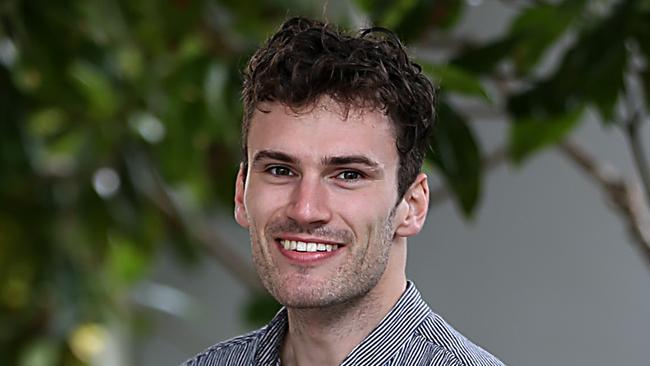Spinal cord breakthrough a step forward
When ballet dancer Tom Elphick dived into the sea during a holiday in Portugal five years ago, he fractured his vertebra, and life as he knew it changed radically.

When ballet dancer Tom Elphick dived into the sea during a holiday in Portugal five years ago, he misjudged the depth of the water. Hitting his head on the sand, he fractured his vertebra, and life as he knew it changed radically.
Mr Elphick was paralysed from his collarbone down, but he was lucky to retain some sensation and strength in his arms and legs. Today, he walks with the aid of a brace, but he knows that the possibilities of regaining more movement and strength are great.
Now 26, he dedicates his life to spinal cord injury research, has obtained a bachelor’s degree in neuroscience and plans to study to become a doctor.
He’s well aware of advances made in research into curing spinal cord injuries. In February, he will sign up to take part in a world-first clinical trial that will test whether non-invasive neurostimulation can help those with spinal cord injuries to regain movement, function and perhaps even walk again. “I think we are on the verge of many breakthroughs — we just continually need to support our researchers and give them the time and resources to find out what those breakthroughs are,” he said.
Neurostimulation involves applying electrical currents to the spinal cord to “wake up” nerve pathways that have survived damage. An invasive method has been trialled overseas, where electrical stimulation was delivered to the spinal cord internally in the spine’s epidural space, and the results were remarkable, said Duncan Wallace, chief executive of SpinalCure Australia.
“The landmark breakthrough came two years ago where the first people using this technology were able to stand and actually start walking again,” he said.
A double-blinded, randomised control trial being run by Neuroscience Research Australia will test whether the same results can be achieved by sticking the electrodes that deliver the stimulation on the skin above the spinal cord, a much safer, easier method.
“At the end of it and within a relatively few years, we could have a treatment that could be rolled out around the country, where people who are paralysed can have access to this treatment and see improvements in their quality of life,” Mr Wallace said.
While the ability to walk again is a dream for many with spinal cord injuries, he said other improvements in function that may be possible from neurostimulation can be more important for injured people, such as regaining bladder and sexual function.
The trial comes as a new report commissioned by SpinalCure Australia shows that spinal injuries cost the Australian economy $3.7bn per annum, with almost half the costs from personal care and formal or unpaid care by family and friends.
The report by economic consultancy AlphaBeta estimates that a $20m investment in new spinal cord stimulation treatment could achieve a lifetime cost saving of $1.3bn.
About 20,800 Australians are living with a SCI, mostly the result of traumatic causes incurred by people under the age of 65.
Mr Elphick hopes neurostimulation research, with greater investment, may transform the lives of people with spinal cord injuries.




To join the conversation, please log in. Don't have an account? Register
Join the conversation, you are commenting as Logout